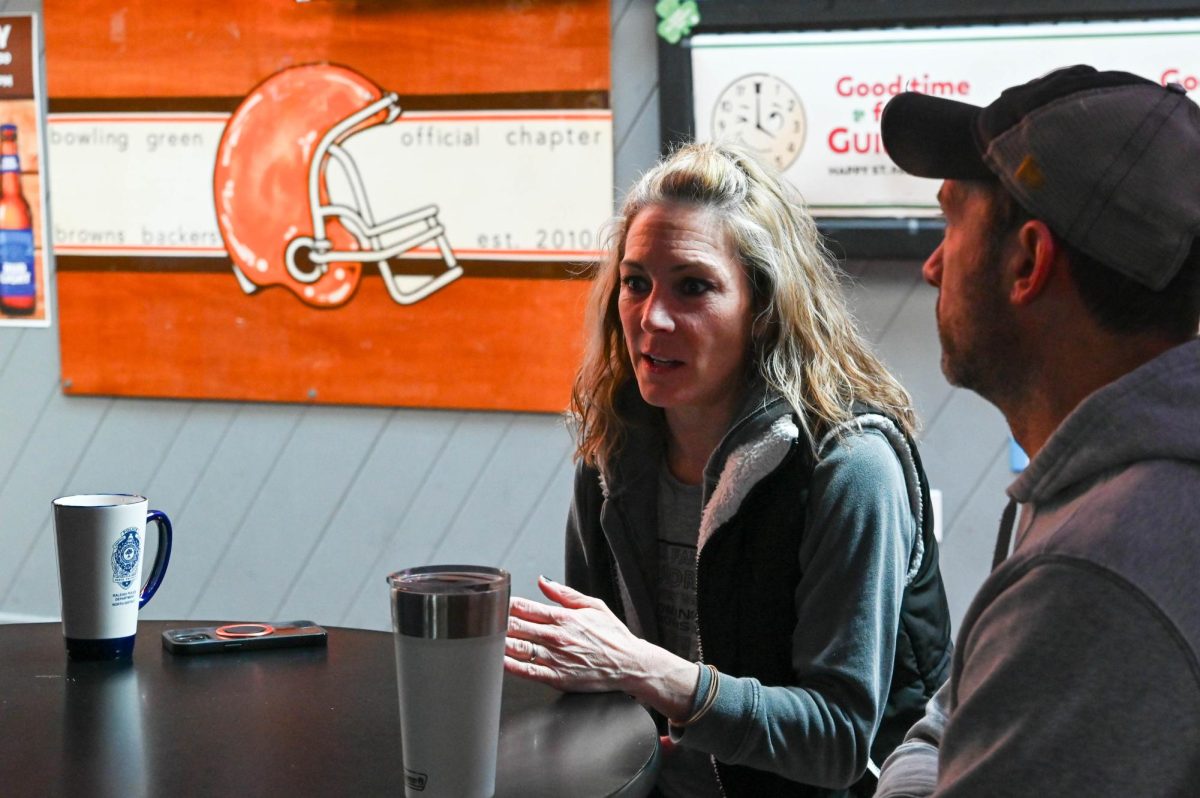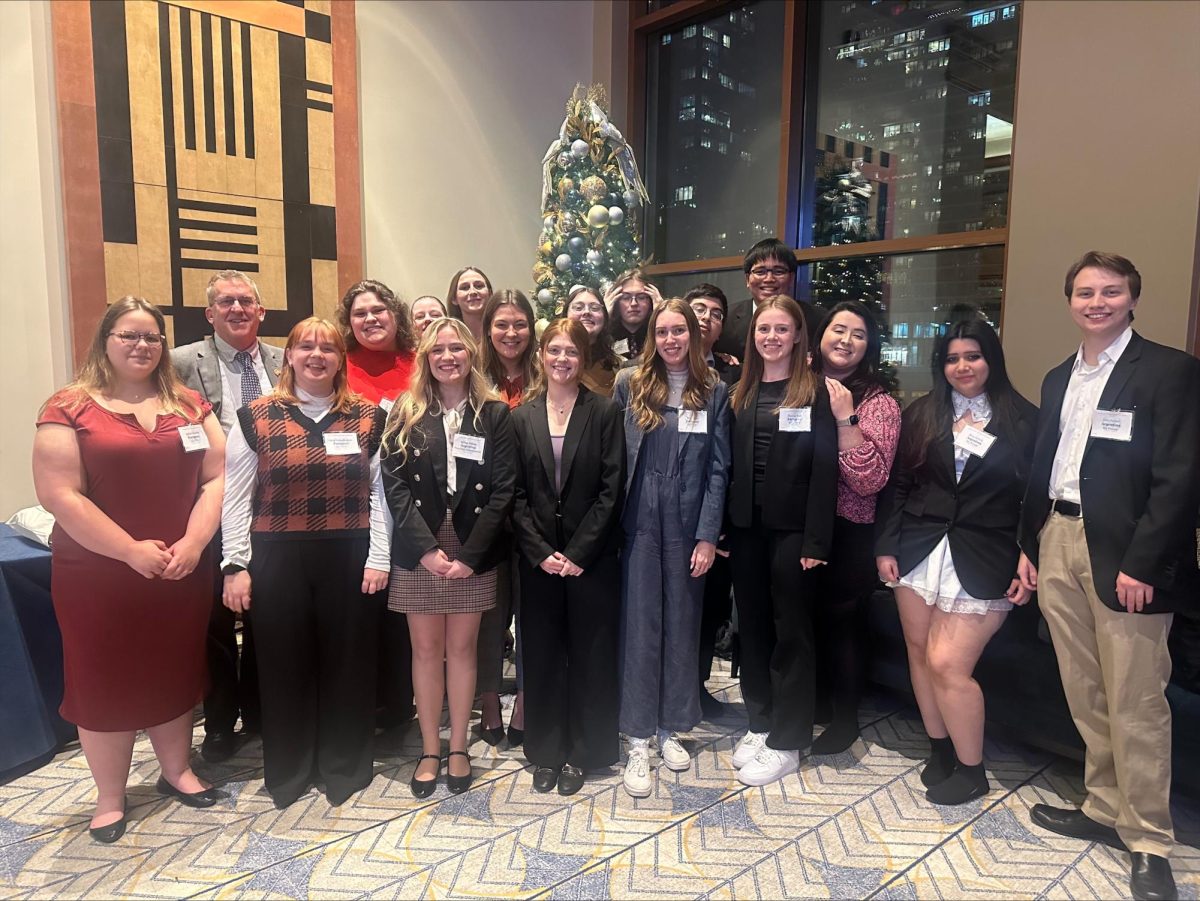Getting water and power to Bowling Green homes is Daryl Stockburger’s job — doing it without polluting, well, that’s his pleasure.
Stockburger, city utilities director, has plenty of plans to turn light, wind and even ozone-harming methane into major sources of city power.
He was rewarded for his efforts Nov. 9, when he received the 2002 Public Servant of the Year award from the Ohio Environmental Council.
The circular, green award — made from recycled glass — recognizes Stockburger as a friend of the environment.
“It’s for using innovative ways to improve city power for the present and future,” he said. “And using resources that are less polluting.”
As far as the present is concerned, Stockburger has several programs already generating clean power for Bowling Green.
Twelve percent of city energy is from hydro power — produced by generators attached to dams. Another five percent is from generators on landfills, which capture methane from decomposing waste. The methane is then harnessed toward the city’s power supply.
Transforming normally harmful landfill chemicals into energy requires technology that has only recently become widespread, Stockburger said.
“They started doing it in the ’70s,” he said. “Only now do they have equipment that’s reliable.”
Getting to play with such high-tech toys keeps Stockburger’s job interesting.
“I simply love the broad spectrum of technology,” he said. “It helps make it a varied day — no two are the same.”
But much of this technology is located elsewhere. Most of Bowling Green’s power isn’t generated locally — the city buys energy from plants across the state. Aside from backup power, all city energy is generated elsewhere.
But Stockburger thinks this might change.
“I see this city looking for stability by building some of our own power,” he said.
And they’re working on that. Right now, a tower between Route 6 and Poe Road monitors city wind to see how much power could come from Bowling Green’s breeze.
Only a few hurdles — building and zoning permits, in particular — must be cleared before wind power becomes common in Bowling Green, Stockburger said.
“I’d like it to be (ready) by September of 2003,” he said.
He is also dabbling in solar power — a few nearby schools now generate some of their own energy from solar panels.
But even with all his promotion of clean energy, Stockburger has spent most of his 15 years as utilities director working with traditional power sources like coal and natural gas. He is also in charge of the city’s water supply.
“If (the utilities department) wasn’t here, it would go dark, and you’d get thirsty — at least when the beer ran out,” he said with a laugh. “And your John would back up.”
Stockburger and his department have also made efforts to clean the city’s drinking water.
Earlier this year, the city installed 12 tanks filled with granular-activated carbon, known as GAC. The tiny, black carbon grains — also be found in household water filters — pull impure chemicals from the water as it flows through.
The GAC tanks should help put an end to the drinking water’s reputation for impurities, Stockburger said.
“It’s been effective against the taste and odor we get during the algae bloom in summer,” he said.
Traces of herbicide from farm run-off are down, too, he added. “It’s below detectable levels.”
Stockburger is especially motivated to stop city problems like these — he hates having a dissatisfied customer.
“We pride ourselves on our job,” he said. “But, occasionally, as humans do, we fail to do a good job. And it may not be possible to make it right, like if there’s a power outage, and someone’s computer goes out, and they lose their thesis.”
But the good outweighs the bad, Stockburger said.
“I like being able to make things happen to improve life for myself and my neighbors.”







